Annotated Bibliography on 3D Printing: Mechanical Engineering
VerifiedAdded on 2021/05/31
|5
|648
|110
Annotated Bibliography
AI Summary
This annotated bibliography provides a comprehensive overview of 3D printing, examining its applications and advantages across various sectors. The bibliography includes two key references: Pryor (2014), which investigates the implementation of 3D printing services in academic libraries, highlighting its benefits for knowledge generation and practical project development, and Attaran (2017), which focuses on the rise of 3D printing and its competitive advantages over traditional manufacturing methods, emphasizing shorter timeframes, design flexibility, and customer-friendly manufacturing. The analysis of each source includes a summary of its objectives, key findings, and any identified drawbacks, along with recommendations for further research and practical application. The student's work underscores the transformative potential of 3D printing in both academic and industrial contexts, suggesting its adoption to foster innovation and enhance competitiveness. This bibliography serves as a valuable resource for understanding the current state and future possibilities of 3D printing technology.
1 out of 5
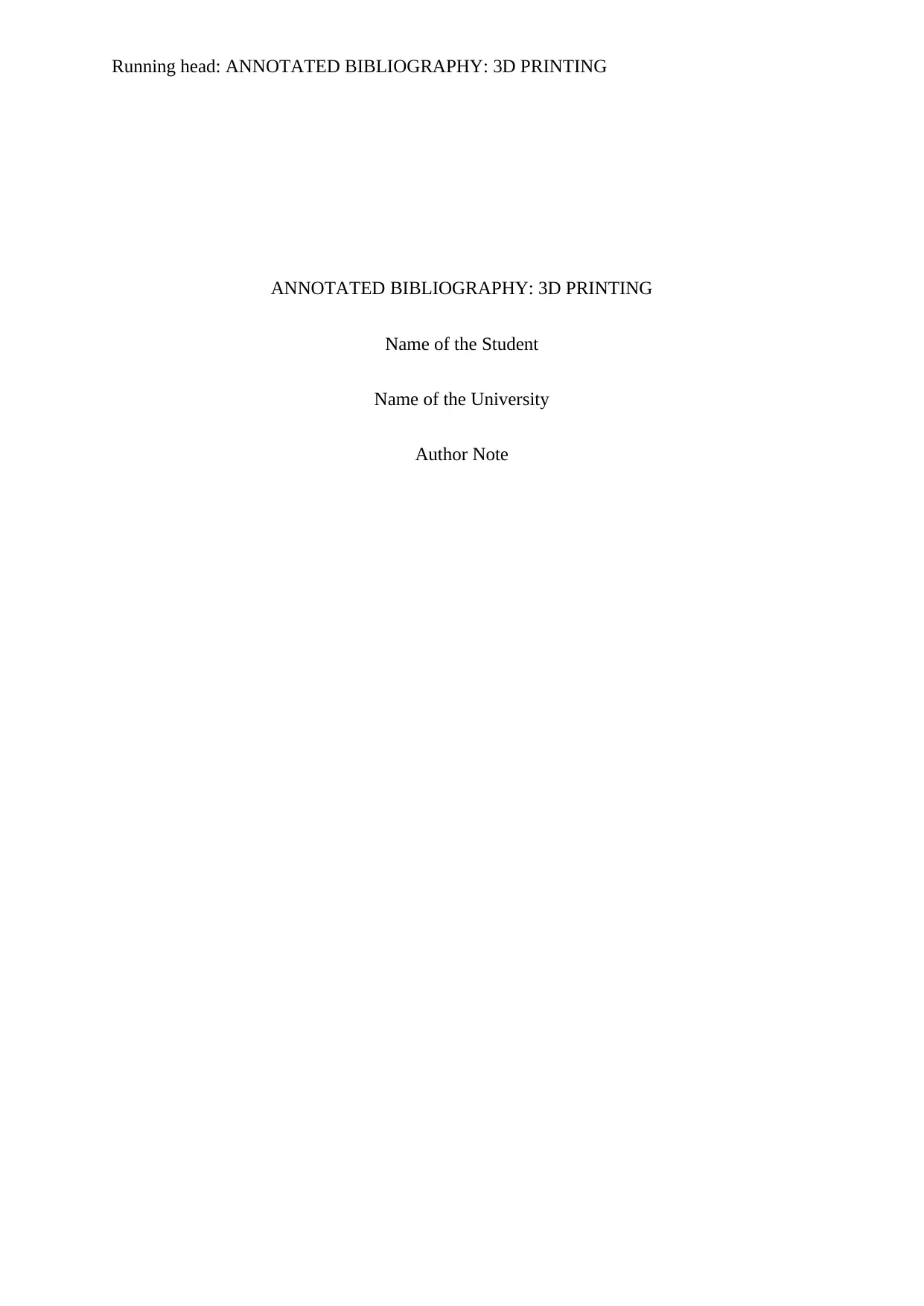
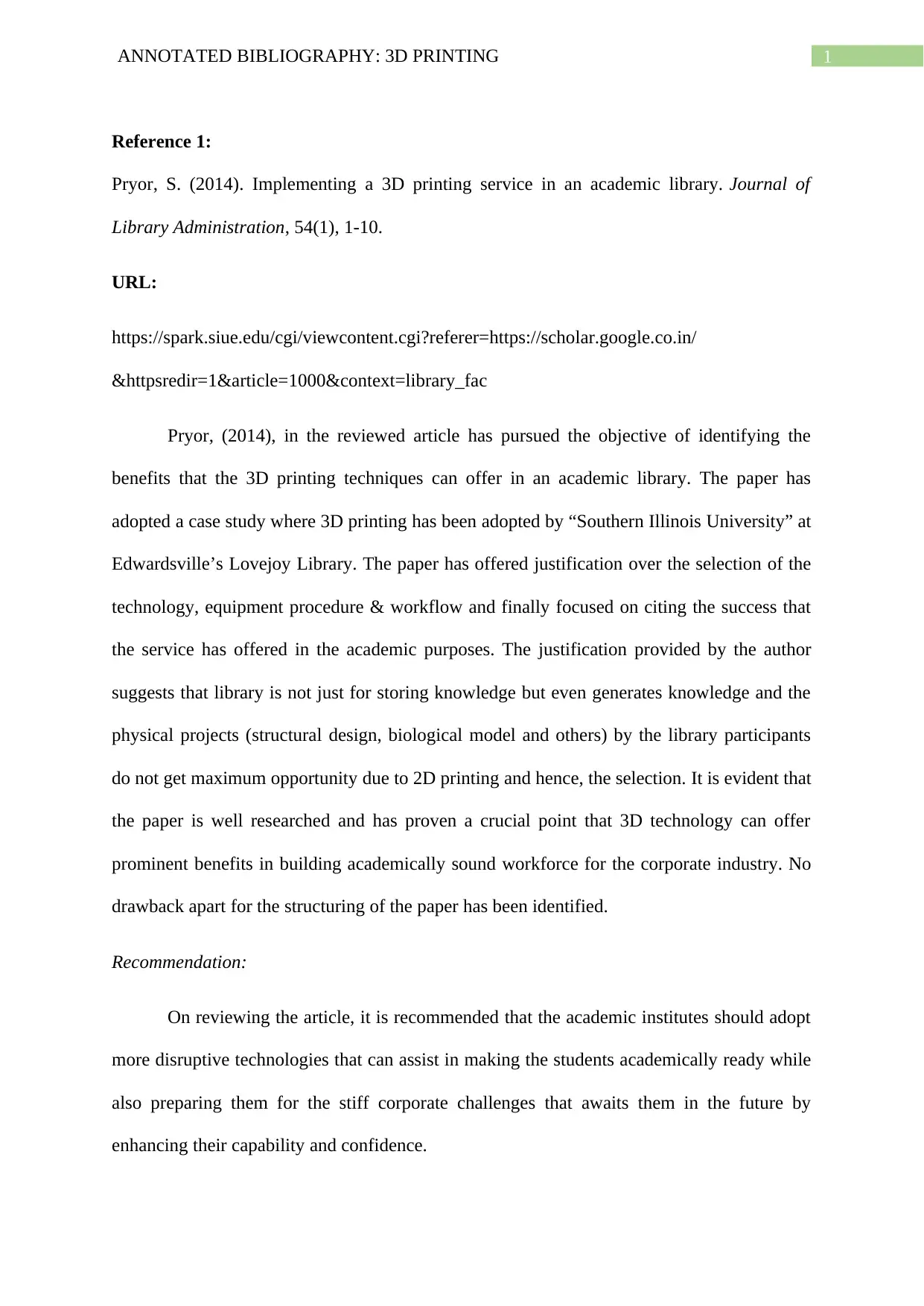
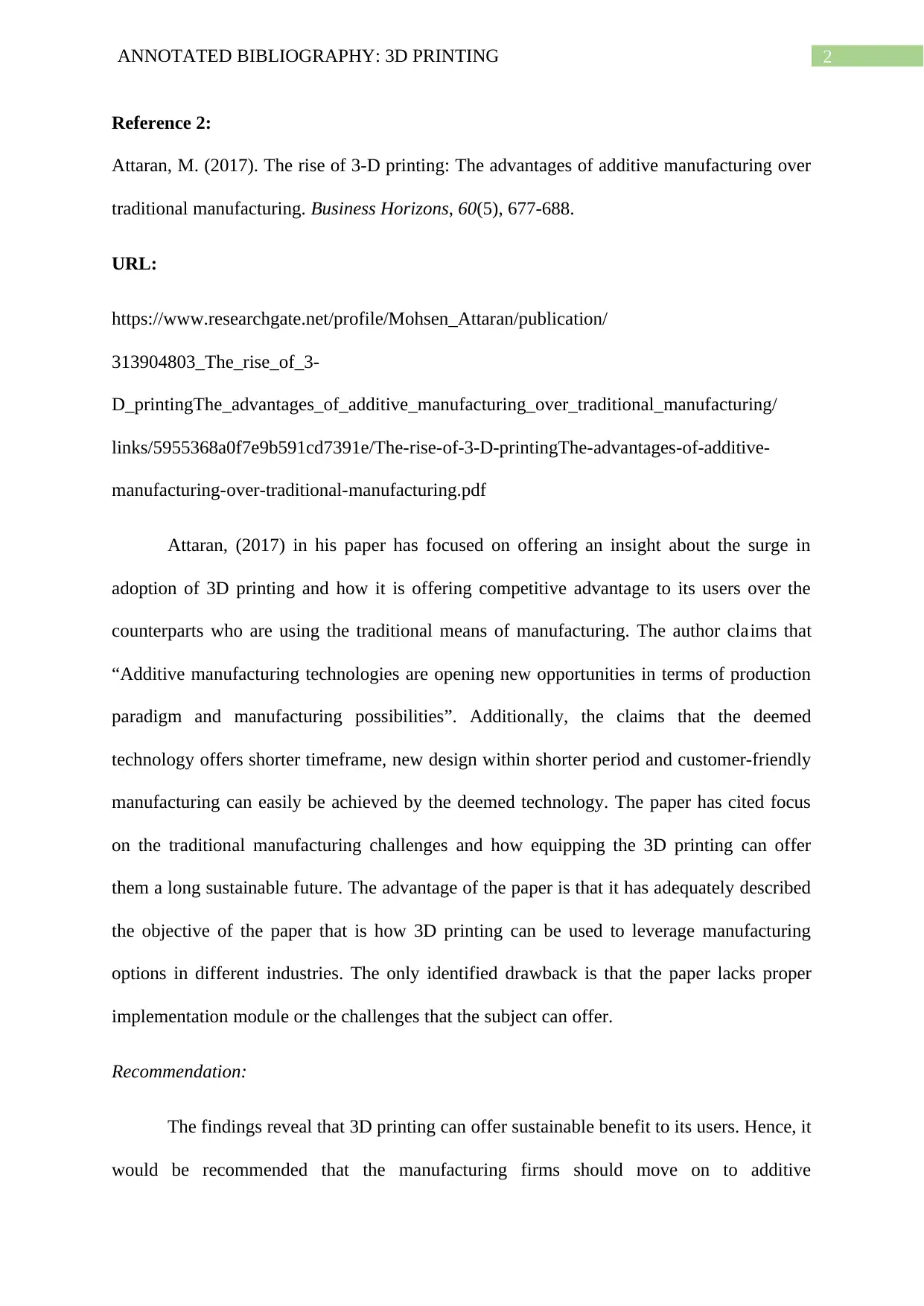

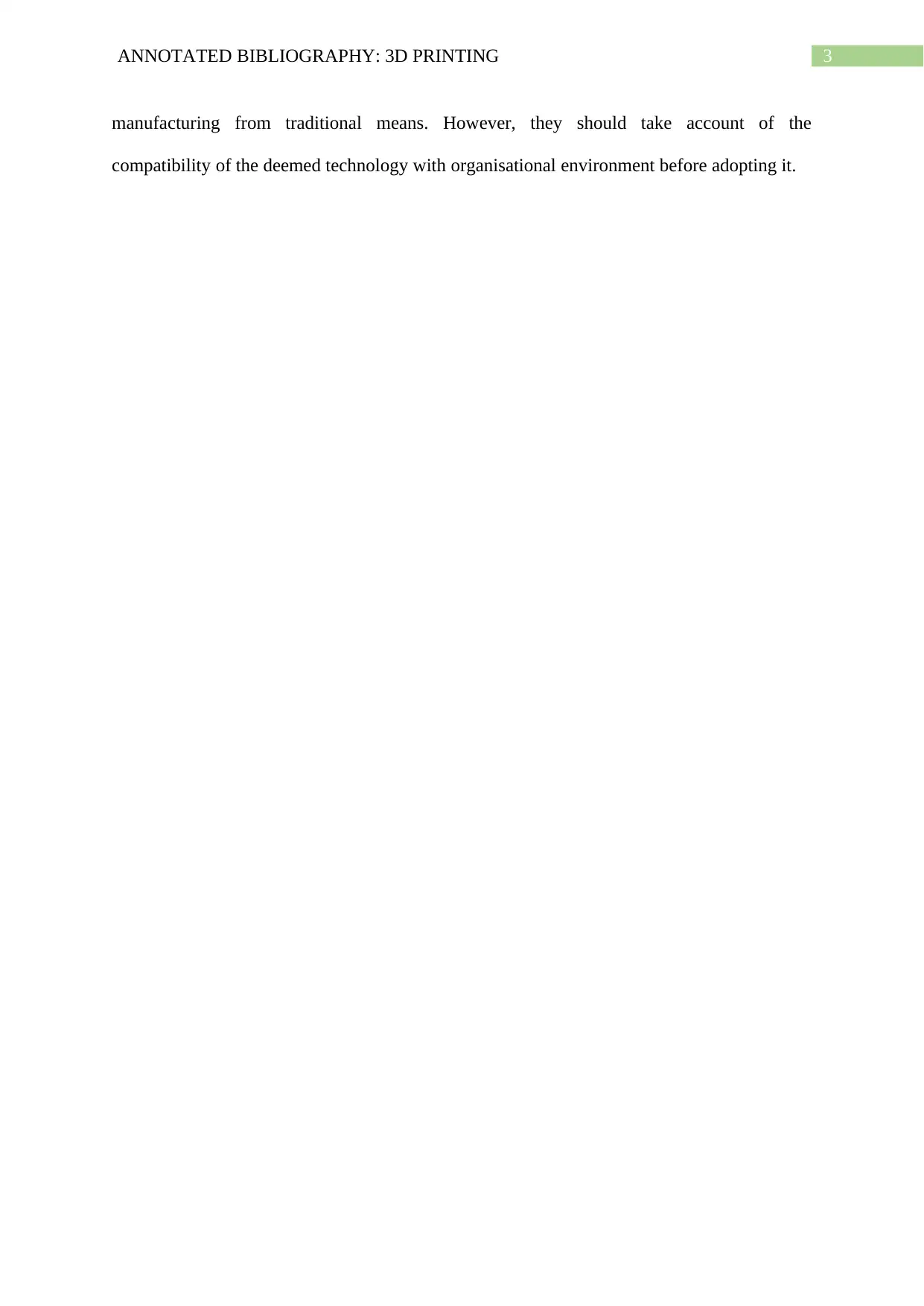
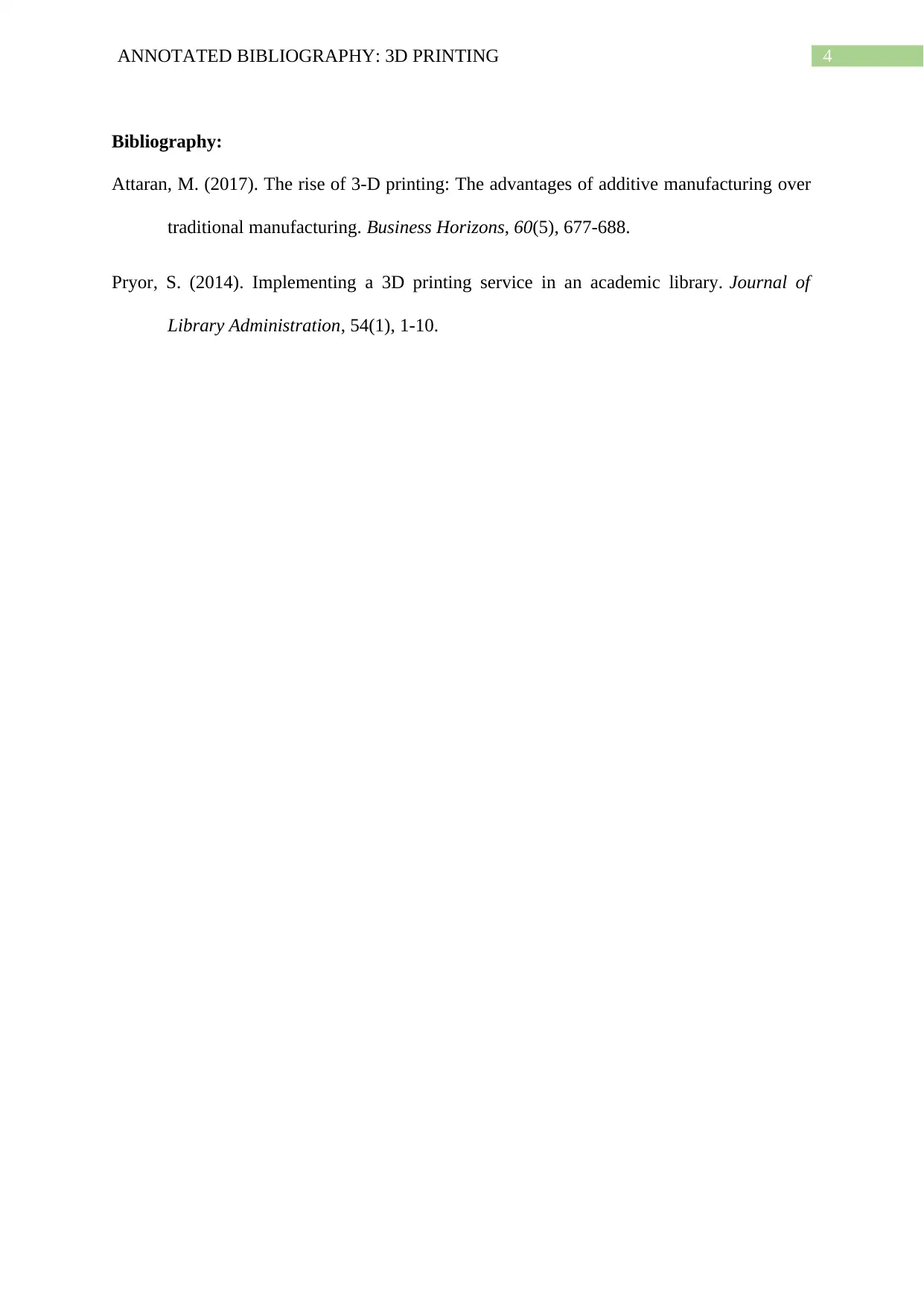




![[object Object]](/_next/static/media/star-bottom.7253800d.svg)